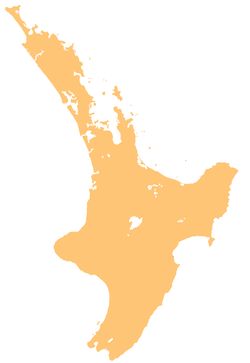Akuaku
|
Akuaku Aku Aku |
|
|---|---|
| Village (abandoned) | |

Famous Akuaku resident, Major Ropata Wahawaha
|
|
| Motto: Ko Tokatea te maunga; Ko Kiekie te awa; Ko Te Whānau-a-Rākairoa te hapū; Tihe mauri ora! | |
| Location of Akuaku in New Zealand's North Island | |
| Coordinates: 37°59′12″S 178°21′32″E / 37.98667°S 178.35889°ECoordinates: 37°59′12″S 178°21′32″E / 37.98667°S 178.35889°E | |
| Country | New Zealand |
| Region | Gisborne Region |
| Ward | Waiapu Ward |
| Abandoned | c. 1945 |
| Electorate | East Coast |
| Government | |
| • MP | Anne Tolley (National) |
| • Mayor | Meng Foon |
| Population | |
| • Total | 0 |
| Time zone | NZST (UTC+12) |
| • Summer (DST) | NZDT (UTC+13) |
| Postcode | 4081 |
| Area code(s) | 06 |
Akuaku, also known as Aku Aku, was a settlement approximately halfway between Waipiro Bay and Whareponga in the East Coast region of New Zealand's North Island. A traditional landing point for waka taua, the town is most notable now as the former home (and possible birthplace) of Major Ropata Wahawaha, N.Z.C, as well as the ancestral home of Te Whānau-a-Rākairoa.
Akuaku was once a thriving settlement — the hub of the area — with a school, church, and a marae with a wharenui called Rakeiroa. Akuaku never had a road, and when Waipiro Bay's road was built in the early 20th century, Akuaku's residents began to move. The final residents of Akuaku left around 1945, and three cemeteries are all that remain of the town today.
Akuaku was named by Pāoa, captain of the Horouta waka, around 1350. The name is literally translated as "scraper", or to "scrape out" or "cleanse".
Akuaku was the sight of one of the main Ngāti Ruanuku pā, where the tribe welcomed Pākānui ashore before he eventually killed many of them in a battle at Whareponga called Te Ika-Kōpara-rua (two fish in one net). After observing Ngāti Ruanuku as their guest, Pākānui and his 90 men trapped members of the tribe, including their chief, Rangi-rākai-kura, in nets while they were fishing, before killing them with their patu. This was done for Pākānui's grandmother, Materoa, who wanted the whānau's mana restored after Ngāti Ruanuku killed her father, Poroumātā, a former resident of the area.
Survivors from Ngāti Ruanuku retreated to the Waiapu Valley, where they found refuge among the Wahine-iti people while planning their attack on Pākānui. When Pākānui's scouts informed him Ngāti Ruanuku were returning to Whareponga, he put a plan into action. His warriors were concealed up small streams along the beach in between Whareponga and Akuaku's Mataahu Point, with Pākānui himself stationed at the point (at 37°59′7″S 178°22′4.5″E / 37.98528°S 178.367917°E). His brothers Riki-pāpaki and Raro-taka, who were fast runners, challenged Ngāti Ruanuku at Whareponga, then ran away towards the point. Ngāti Ruanuku chased them, and by the time they reached Pākānui, they were exhausted. At this point Pākānui's warriors emerged from their hiding place, and killed the entire party. There were so many bodies lining the beach after the battle that they formed a barrier for the sea, giving rise to the battle's name Te Tai-timu-roa (The long high-tide). The other name of the battle, Te Poho-wera (The Burnt-breast), refers to the fact that when the bodies of Ngāti Ruanuku were customarily cooked to be eaten, some of the victim's breasts were burnt.
...
Wikipedia

